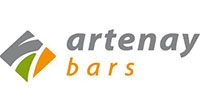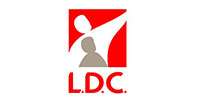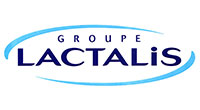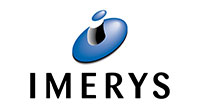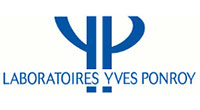
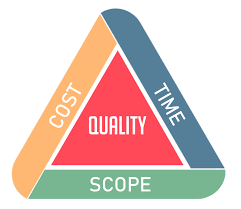 The project management triangle, or Cost, Time, Scope triptych, is a basic, in both fundamental and simplistic meanings, concept of project management. It aims at illustrating the interdependence and influence of those three key factors on the success of the project. It can be vulgarly summed up by “Good, fast, cheap. Choose two.”. But things are not this black or white. In the specific case of professional software implementation projects, new Software Development Lifecycle (SDLC) methods– such as Agile, Incremental, Iterative methodologies- allowed to break down project management practices to gain more flexibility and reactivity.
The project management triangle, or Cost, Time, Scope triptych, is a basic, in both fundamental and simplistic meanings, concept of project management. It aims at illustrating the interdependence and influence of those three key factors on the success of the project. It can be vulgarly summed up by “Good, fast, cheap. Choose two.”. But things are not this black or white. In the specific case of professional software implementation projects, new Software Development Lifecycle (SDLC) methods– such as Agile, Incremental, Iterative methodologies- allowed to break down project management practices to gain more flexibility and reactivity.
This three-party balance- Cost, Time, Scope- will be assessed and finetuned thanks to dedicated operational tools along the project. However, it remains an interesting macro-concept that will help you shape your PLM project and its priorities.
What does happen when costs lead a PLM project? When time leads? How can we still reach a satisfactory product? Is it viable to minor the scope of my PLM solution?
1. Cost, time, scope: when Costs lead
Great corporations or highly-anticipative companies may have more slack regarding their PLM budget and be more inclined to consider features or services initially outside of their scope. However, most companies do not enjoy this peace of mind and must play with a more restrictive hand of cards.
Following the triangle’s principle, if budget is your primary and major concern, putting pressure on it will have consequences on both the scope and time parameters. One can easily understand how it is possible to trim the scope of your solution to comply to your budget limitation. Though, the impact on the time axis is a bit trickier to apprehend. Time covers both the concerns of duration– How fast can we get things done?- and available resource– How much “human time” is needed for what I want?
Delaying or phasing the delivery of the solution can be a leverage on the time factor. However, this margin is not that big in the case of a PLM project ; because there will be incompressible tasks, steps and discussion to go trough to deliver the defined scope, which, circling back to what we first said, can be reviewed to adjust the budget and required time resources. And this is just a glimpse at how interdependent these three factors are.
2. Cost, time, scope: when time leads
“Our formulation software stops being supported in 6 months, we absolutely need to replace it!”. “We are starting a subsidiary and need a specification management tool implemented for launch.”. “Our new parent company wants a PLM solution to harmonize the IS of the new business units.”. Inspired from our own customer stories, these quotes illustrate situations when pressure is greater on the clock than on the wallet. Whatever your story is, you seek to choose and implement your solution quickly.
Your first responsibility is to formalize your requirements, needs and expectations as clearly as possible. Different questions can help answer that depending on your specific context. You are looking to replace a solution: what does our solution do? What are the features we can not work with? What are the ones we use the least? What does our current solution lack?
Your supplier responsibility is to consider your time constraint and propose a realistic offer- functional scope, implementation planning, services, etc.- to deliver an operational solution within your reasonable delays.
An obvious conjoint responsibility for a timely delivery of a PLM solution is availability and reactivity of both parties.
3. Cost, time, scope: can you undermine the scope of your solution for the sake of costs and time?
You should not be but it happens when one puts too much constraints on the other two factors, costs and time. Everything is a matter of balance and equilibrium. The new technological and commercial innovations in the PLM sector with cloud, packaged, subscribe-based solutions make the technology more accessible than ever, allowing high flexibility and scalability of the functional scopes. It is perfectly fine to go for the cheapest set of features, with the possibility to scale it up in the future, or sacrifice a few polishing (on branded UI for instance) for a solution delivered on time.
When costs or time are your main drivers for a PLM solution project, you should favor configurable solutions to customizable ones. A customized solution will be able to fulfill your NPD desires, but at a financial and timely cost. As it consists in the extension of the standard scope offered by your supplier, the extra work pulls the other two factors up. Through more than 10 years of successful PLM projects with CPG industry leaders and innovators, Lascom from Aptean refined the best of the PLM technology in a pre-packaged, module-based solution: Aptean Food and Beverage PLM Lascom Edition.



















